Instead of new rules and regulations, technological progress often leads to better health and safety at work. Even in dangerous places of work, new technologies may help make things safer. Take the building business as an example. These people are doing what seems like an endless amount of hard physical work. The same is true for the shipping, industrial, and mining businesses.
Workers in these jobs must be close to heavy machines, handle dangerous chemicals, and lift big things while staying on their feet for hours. Making the workplace safer in these potentially hazardous places can be helped by using new technologies. Safety managers have a moral duty to look for optimal solutions that use technology to make their workers safer.
1. Wearable Safety Tools
By offering real-time monitoring and data collecting, wearable safety technology is changing workplace safety. Employees’ use of these gadgets allows them to monitor specific safety-related criteria.
-
Clever glasses and helmets
Sensors and AR capabilities abound in smart helmets and spectacles. They give employees real-time information about their surroundings, such as risks and safety guidelines. An intelligent helmet might, for example, notify a worker of dangerous gases or excessive temperatures.
-
Wearable monitors for health
These wearables can track heart rates, sense weariness, and even detect dangerous chemical exposure. Should a worker’s vitals show pain, a quick response can help prevent mishaps.
2. IoT And Linked Safety Solutions
Comprising a network of linked devices that exchange and communicate data, the Internet of Things (IoT) helps combine several safety health and safety technology in the workplace, building a coherent safety ecosystem.
-
Environmental detectors
These monitors keep accidents from happening because of bad conditions. These sensors can find leaks and spills in areas that handle dangerous products and quickly inform staff about them.
-
Related safety tools
IoT technology allows one to combine safety gear like helmets and harnesses to offer even more layers of protection. A connected harness can let a boss know immediately if a person falls so that they can help immediately.
3. Machine Learning
These systems can examine enormous volumes of data to find trends and project possible threats.
-
A tool for predictive analytics
Predictive analytics powered by artificial intelligence can see safety problems coming. Using data from environmental sensors and incident reports, AI can find trends and offer ways to stop them. This proactive method lowers the risk of accidents.
-
Computer vision
It can be utilized in occupational safety to track real-time video feeds and spot dangerous practices or environments. It can tell when someone is in a restricted place or not wearing protective gear.
Industries like manufacturing and mines use self-driving cars to move goods and do dangerous jobs. With sensors and AI, these cars can handle rough terrain safely and well.
-
VR simulation training
In a controlled setting, VR teaches staff about safety and what to do in an emergency. Immersive training helps workers remember safety rules and deal with dangerous situations without any problems.
-
AR about repairs and maintenance
AR technology helps employees with maintenance and repair by overlaying digital data in the real world. AR glasses, for example, can offer precise portions that demand attention and step-by-step instructions, lowering the possibility of mistakes and mishaps.
4. Safety Management System
Complete safety technology examples include centralizing and simplifying safety procedures within companies.
-
Incident analysis and reporting
Effective incident reporting and analysis made possible by safety management systems helps. Through smartphone apps, staff members can document dangers and events; these are then examined to find underlying causes and apply corrective action. This simplified strategy guarantees efficient and quick resolution of safety concerns.
-
Audit management and compliance
Any business has to promise safety, and compliance with local, national, and international safety rules is easier with safety management tools. Regular audits and inspections make sure that safety methods are up-to-date and working well.
5. Safety Compliance Blockchain
Blockchain technology is being looked into to keep records and ensure safety rules are followed because they are safe and open to everyone.
-
Irutable notes
Blockchain can produce unchangeable documentation of compliance certifications, incident reports, and safety inspections. This guarantees that safety data cannot be altered, offering a trustworthy and open mechanism for safety control.
-
Smart contracts
Blockchain smart contracts help to comply with regulations automatically. When criteria are satisfied, for example, they can set off audits and inspections, guaranteeing ongoing adherence to safety standards.
Conclusion
Technology in safety and security in workplace safety is producing more proactive, safer, and more efficient surroundings. As technology improves, more complicated tools and methods will protect workers in many fields. Every successful company puts the safety and health of its employees first, so using these technologies is more than just staying up to date.









